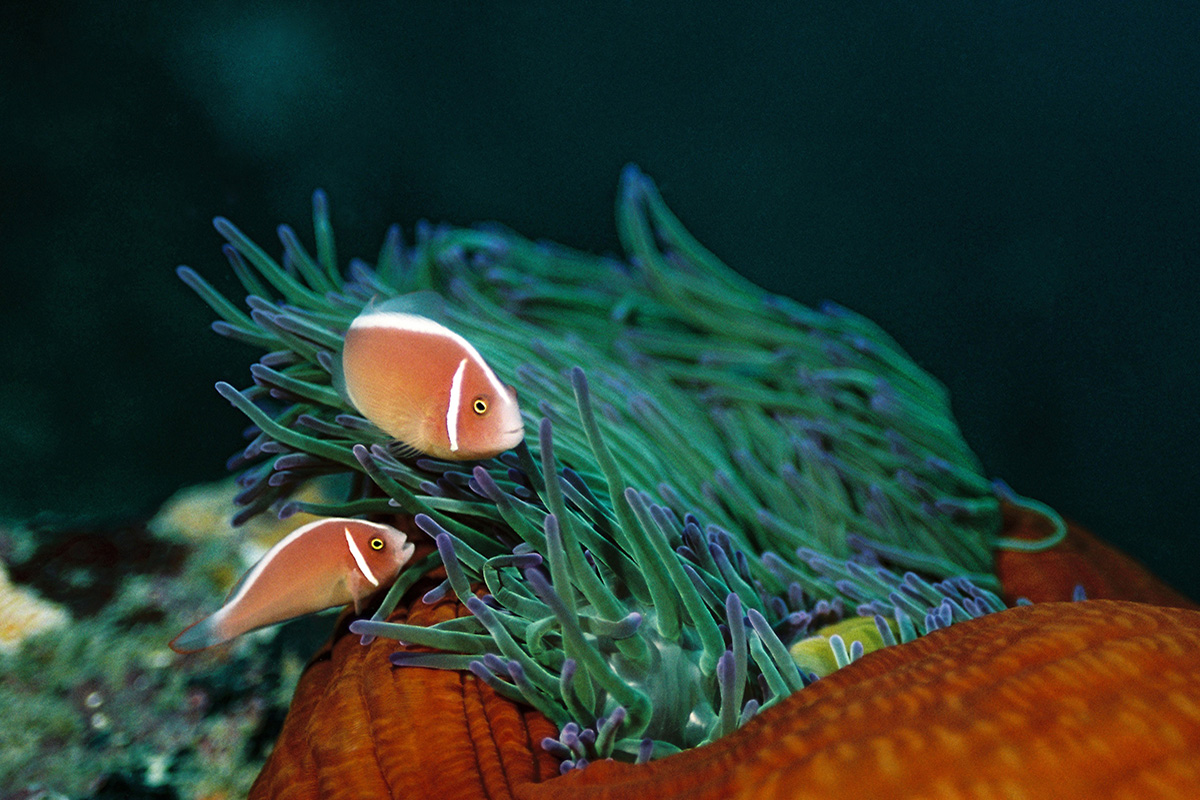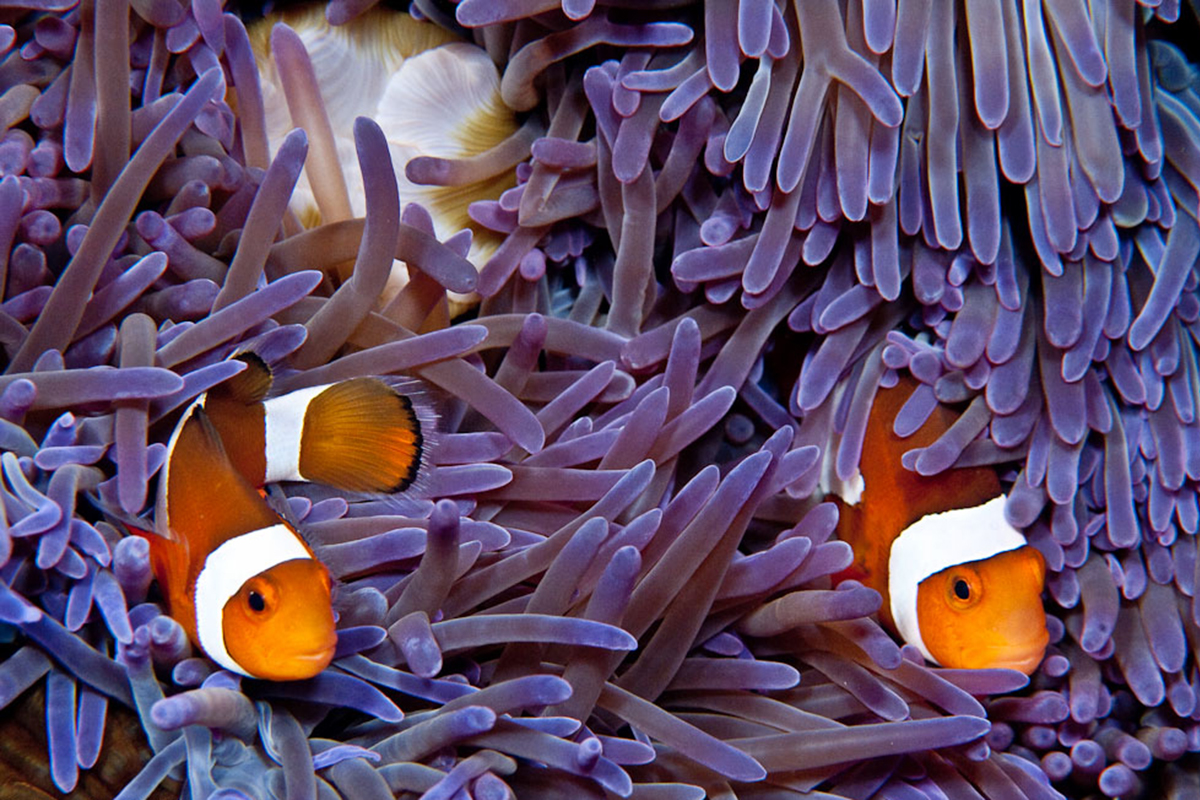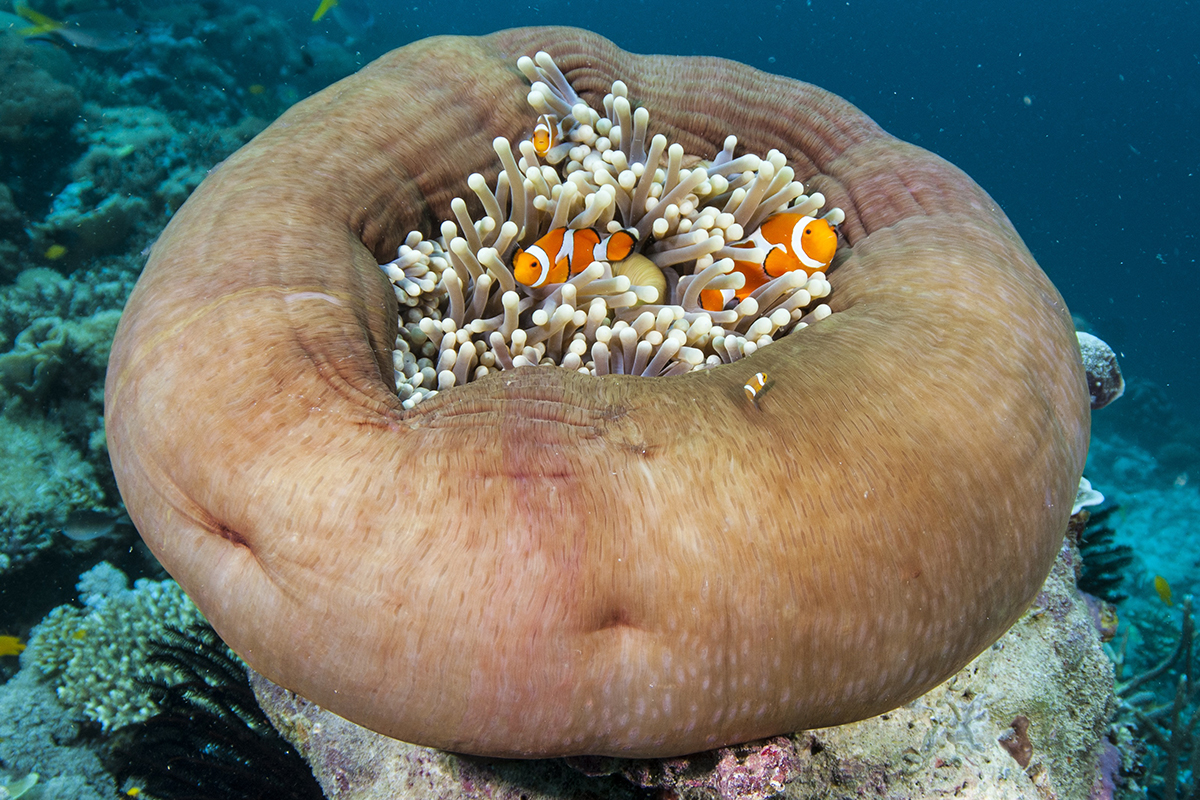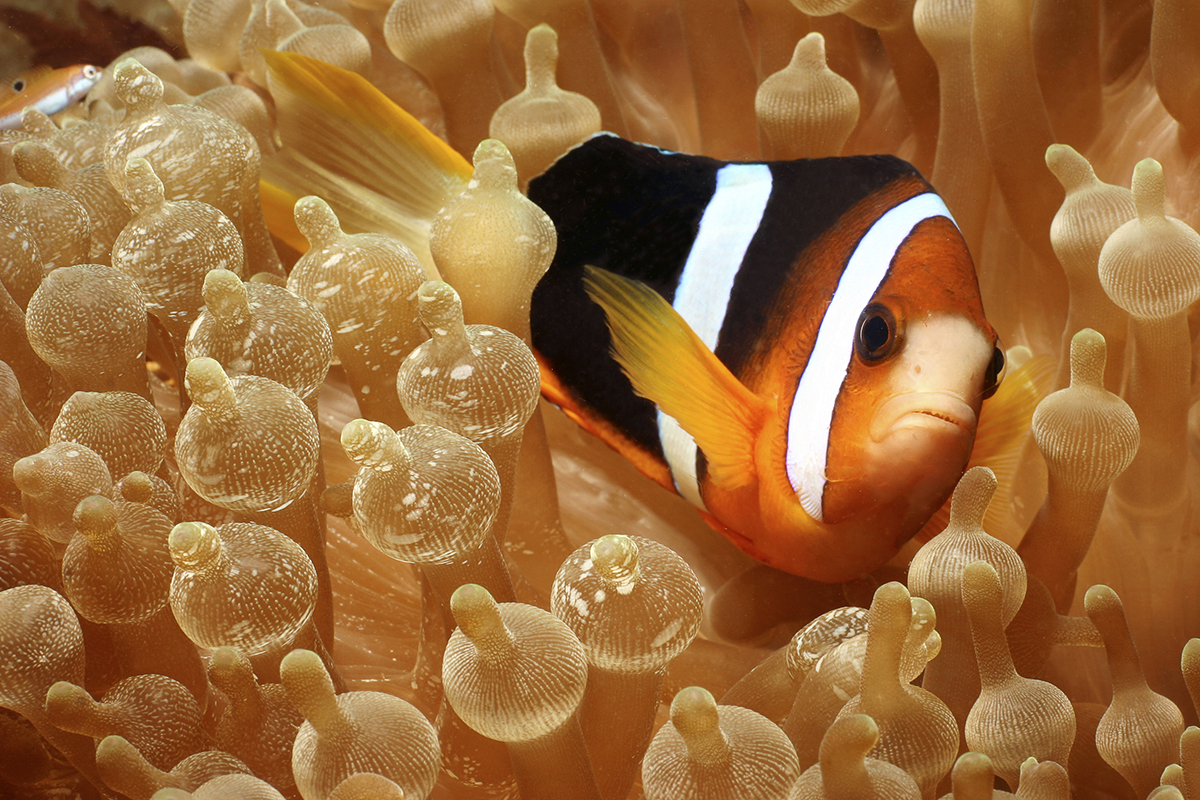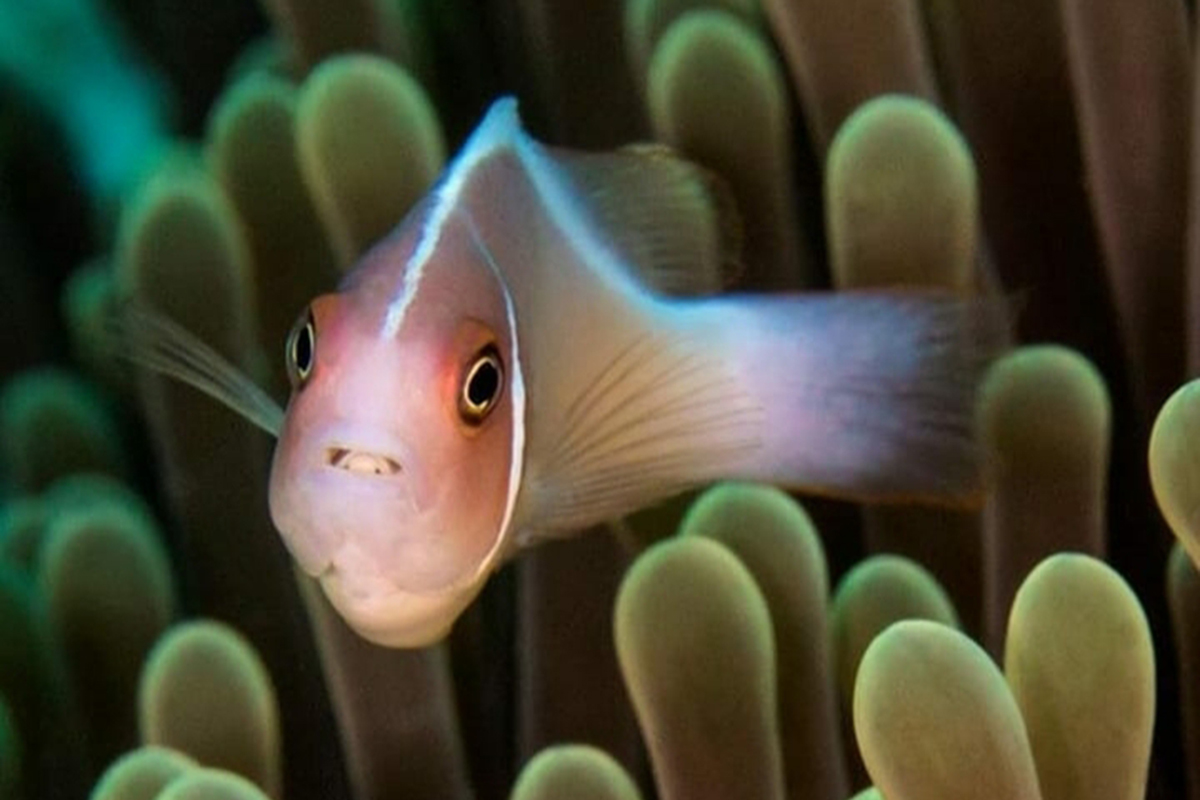5 Things You May Not Know About Anemonefish
Thanks to the film Finding Nemo, anemonefish are probably one of the most recognizable fish in the world. Because of this and their wide range they are also often overlooked by divers who find them common or uninteresting. However, they are actually incredible little fish and there may be some things you don’t know about them. Read on to find out 5 things you may not know about anemonefish.
1. There are many species
Most people know the orange clownfish of Nemo fame but did you know there are around 30 species of anemonefish?
Their colours can vary from orange, orange-red, darker red and even yellow or black. Most varieties have white bands or bars on their bodies and grow up to about 15cm long.
They live in the Indian and Pacific Oceans and in the Red Sea but not in the Atlantic or Caribbean. You can expect to see them at just about every dive site around Gangga Island Resort & Spa.
2. All anemonefish are born male
That’s right, all anemonefish are born male and are hermaphrodites. They change sex and it’s often the most dominant fish that become females. The female then chooses her mate for life. She chooses the largest male and mates only with him. When she dies her mate changes into a female and takes her place. Is your mind blown?
3. The job of the males
Once the female has laid her eggs – sometimes hundreds at a time – the male has the job of watching over them. He will wait for them to hatch and then leave the hatchlings to fend for themselves.
The hatchlings don’t live in the same anemone as their parents but find their own host anemones to make their homes.
4. Safety in the danger zone
The name anemonefish comes from the environment in which these fish live. They are one of the only creatures that are safe from the toxins of sea anemones. This is thanks to a mucus membrane that keeps them safe.
The anemonefish also benefit the anemones as they protect the anemones from predators. The fish even aid in the growth of the anemone by their excretion of nitrogen, which in turn increases algae growth. The algae then helps the anemone to grow and regenerate. Symbiosis at its most incredible!
5. Parasite life
You may see pictures of anemonefish with 2 eyes peeking out from their mouths. This is a common parasite related to a woodlouse called an isopod that lives on the tongue of anemonefish.
Isopods suck blood out of the tongue of the anemonefish and can live in their mouths for several years. They even reproduce in the mouth of the fish. After a number of years the anemonefishes’ tongue withers away. There have been some incredible photos taken of anemonefish and their isopod parasites taken around Gangga Island so make sure to have your cameras at the ready when you dive there.
Did you learn something about anemonefish in this article? They really are much more interesting than you think when you take a little time to learn about them. Do you have any stories about seeing anemonefish while diving? We’d love to hear about your experiences in the comments below.
